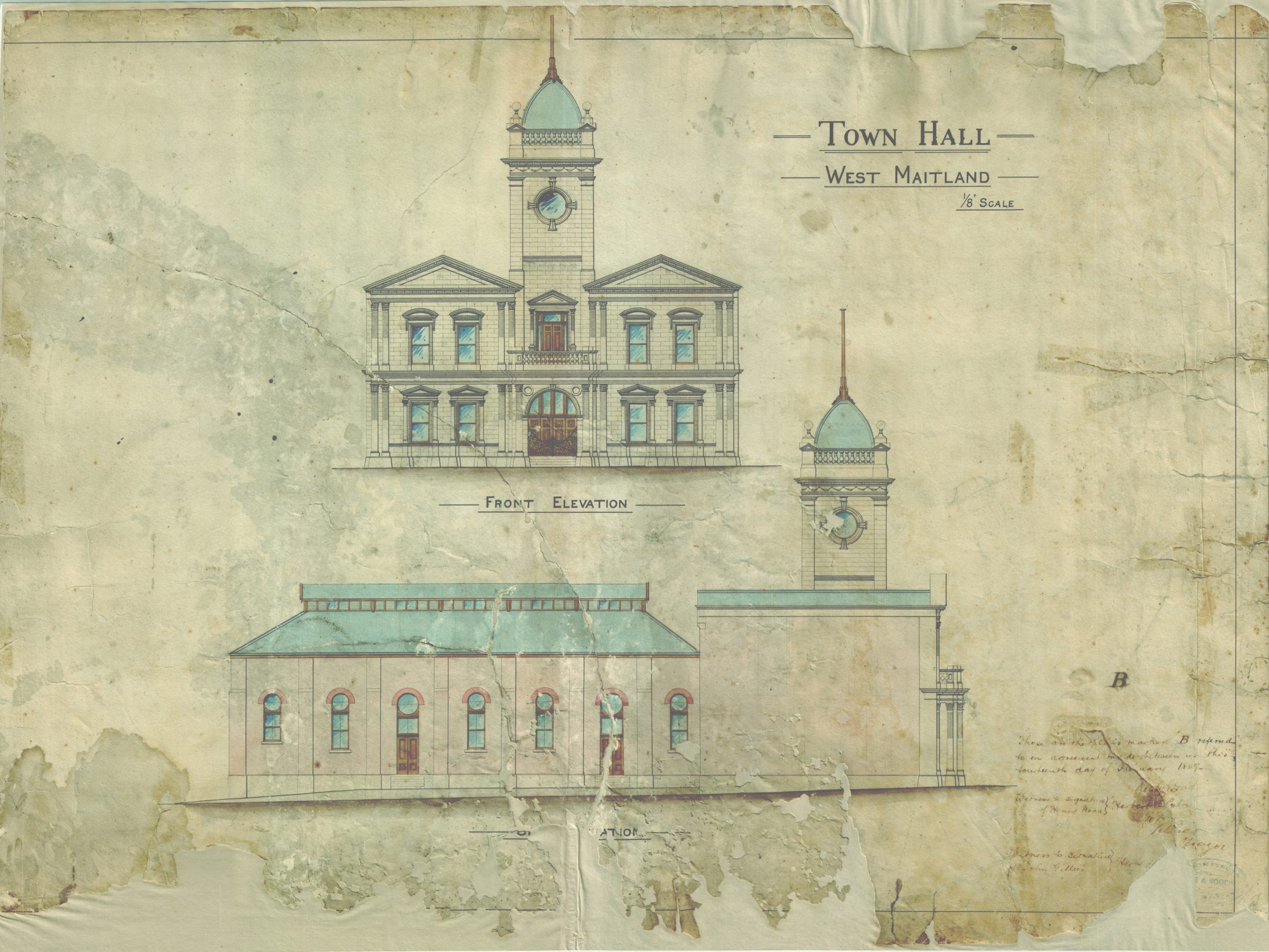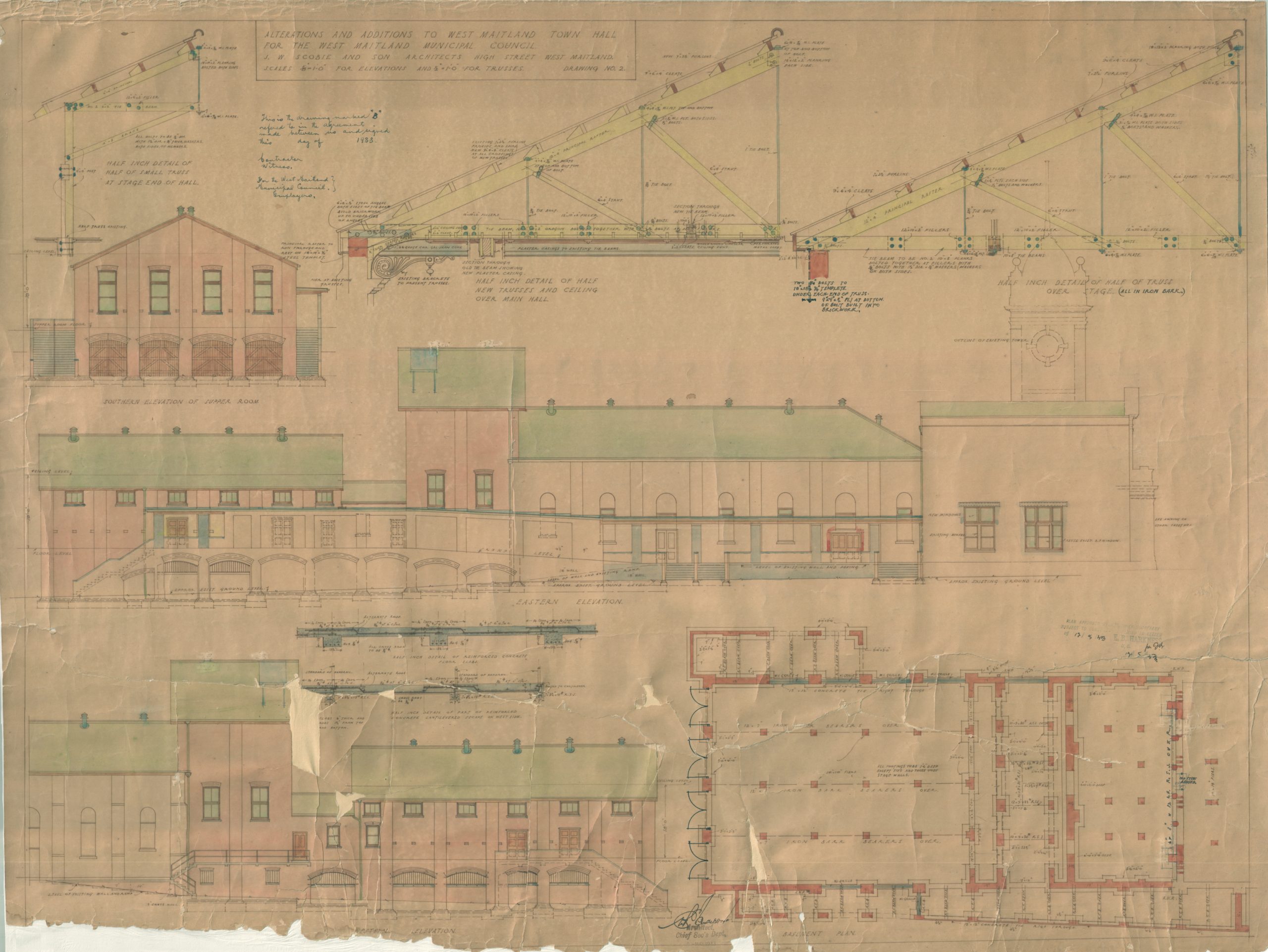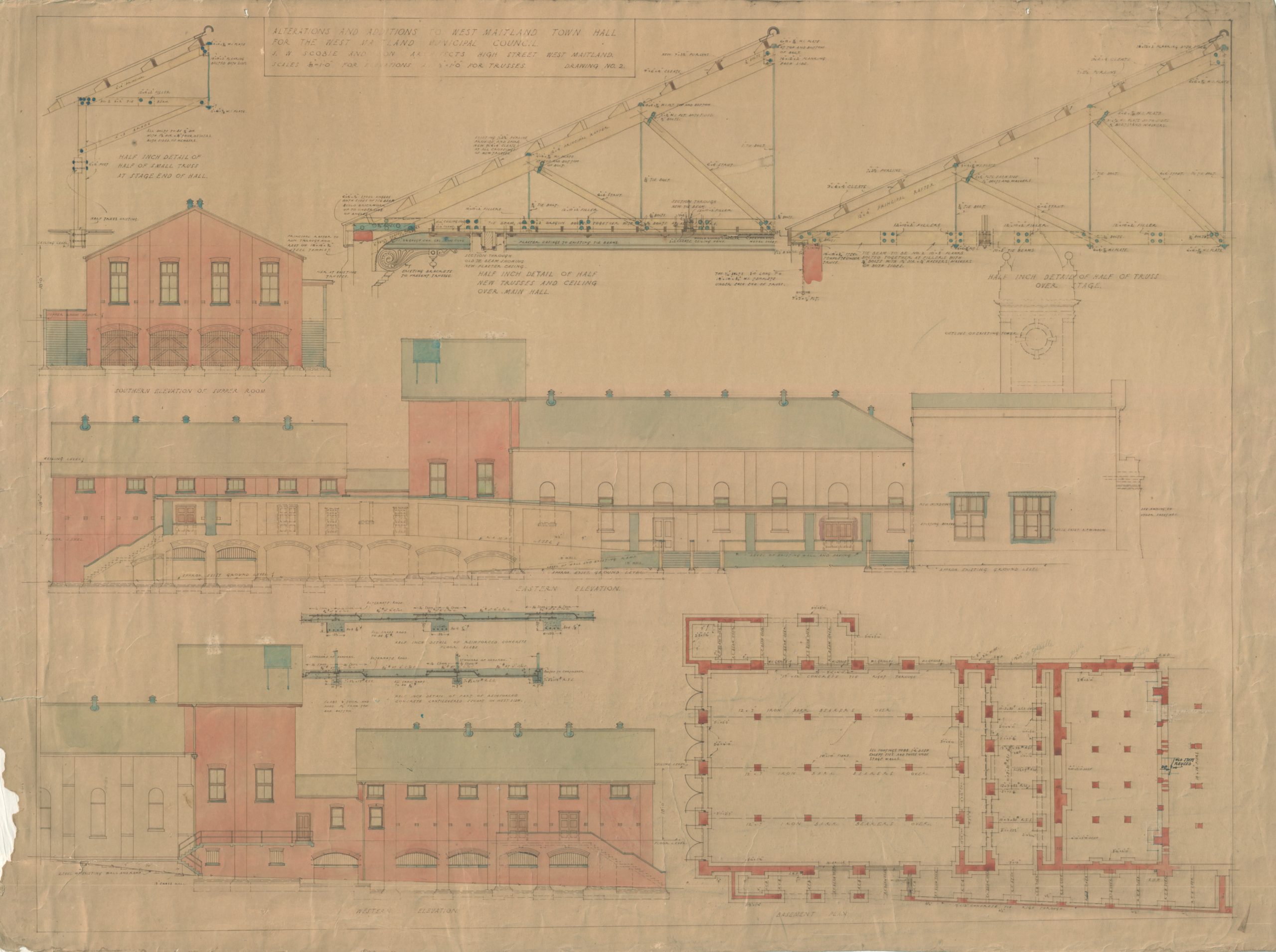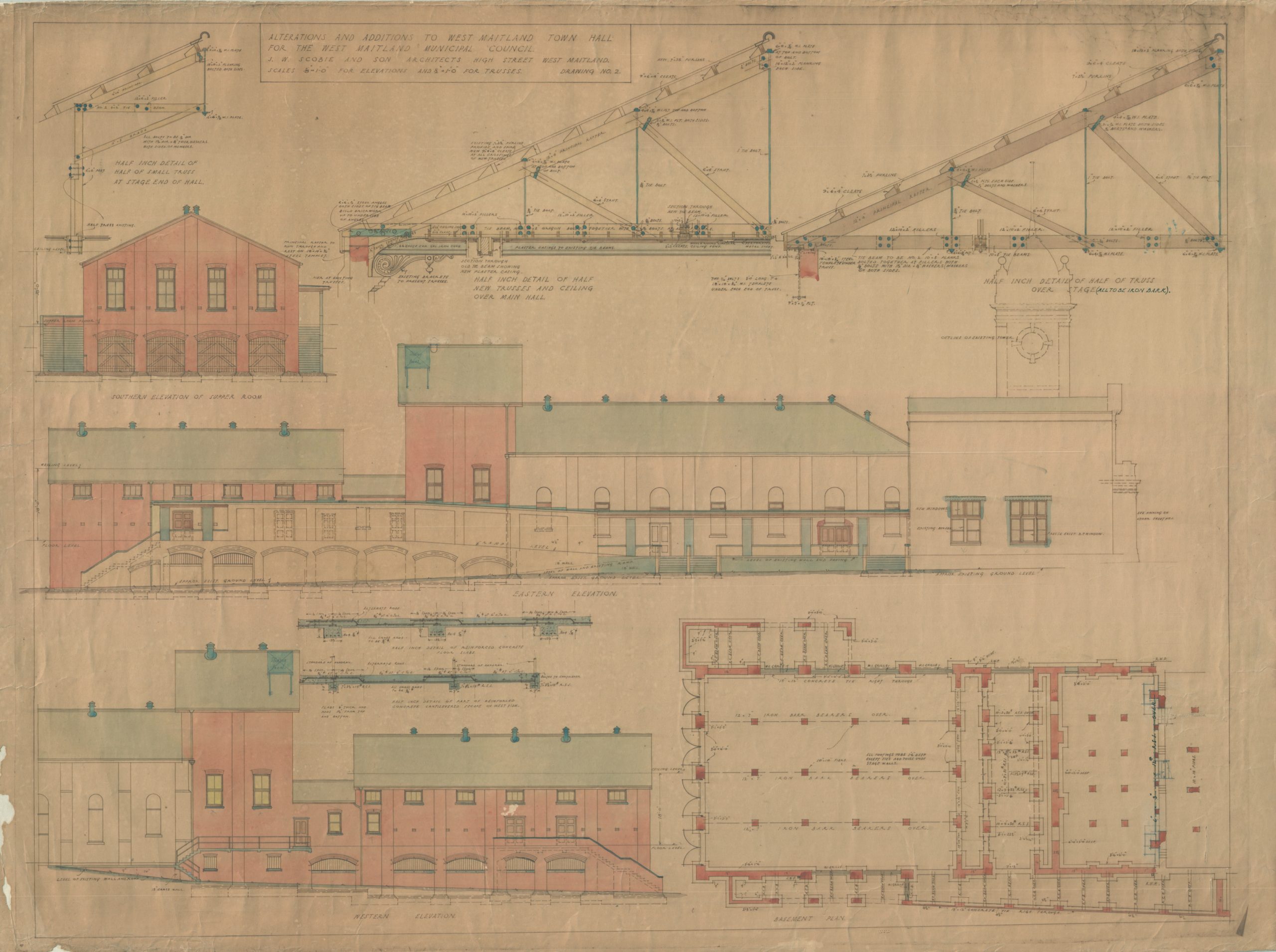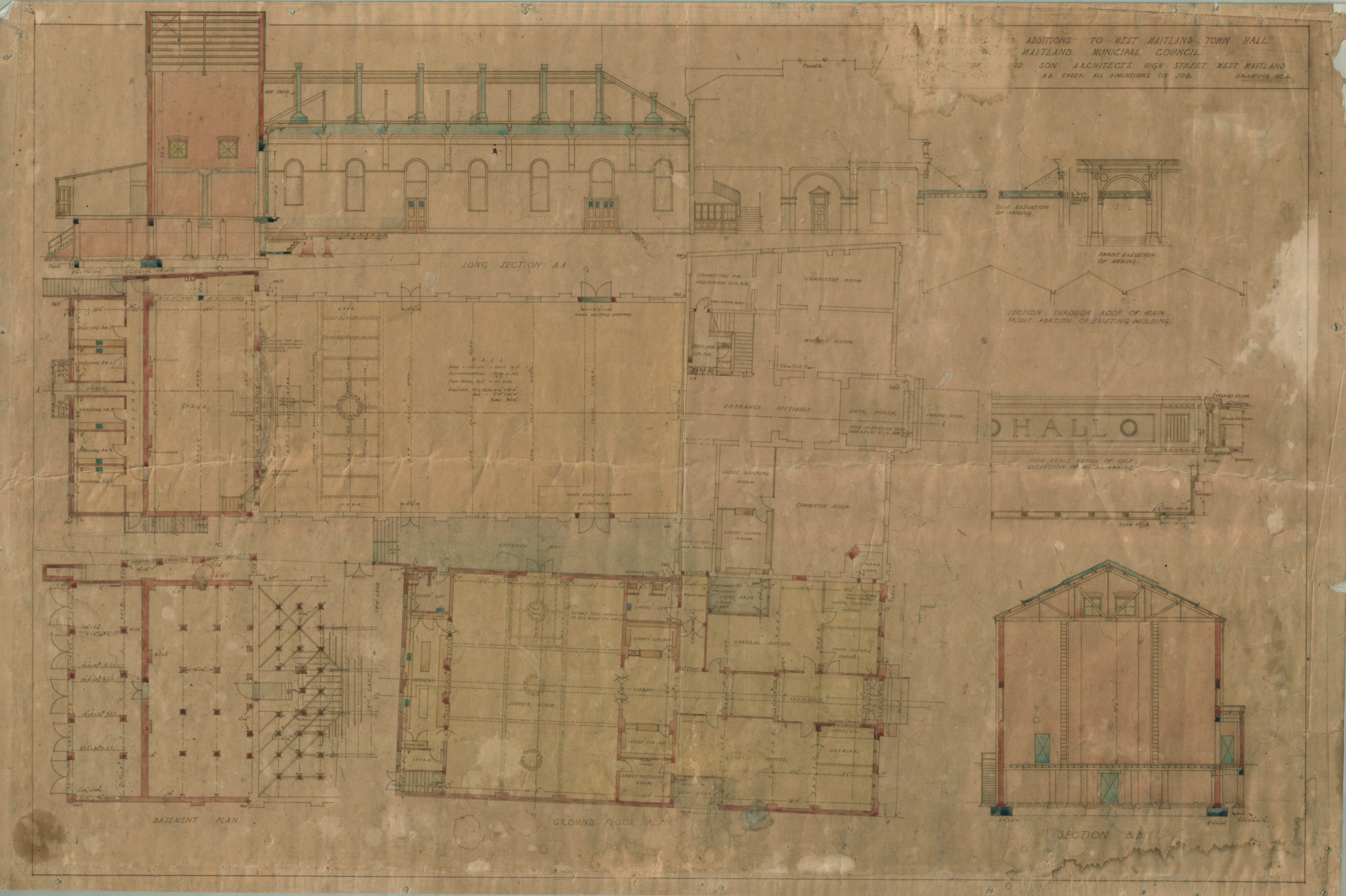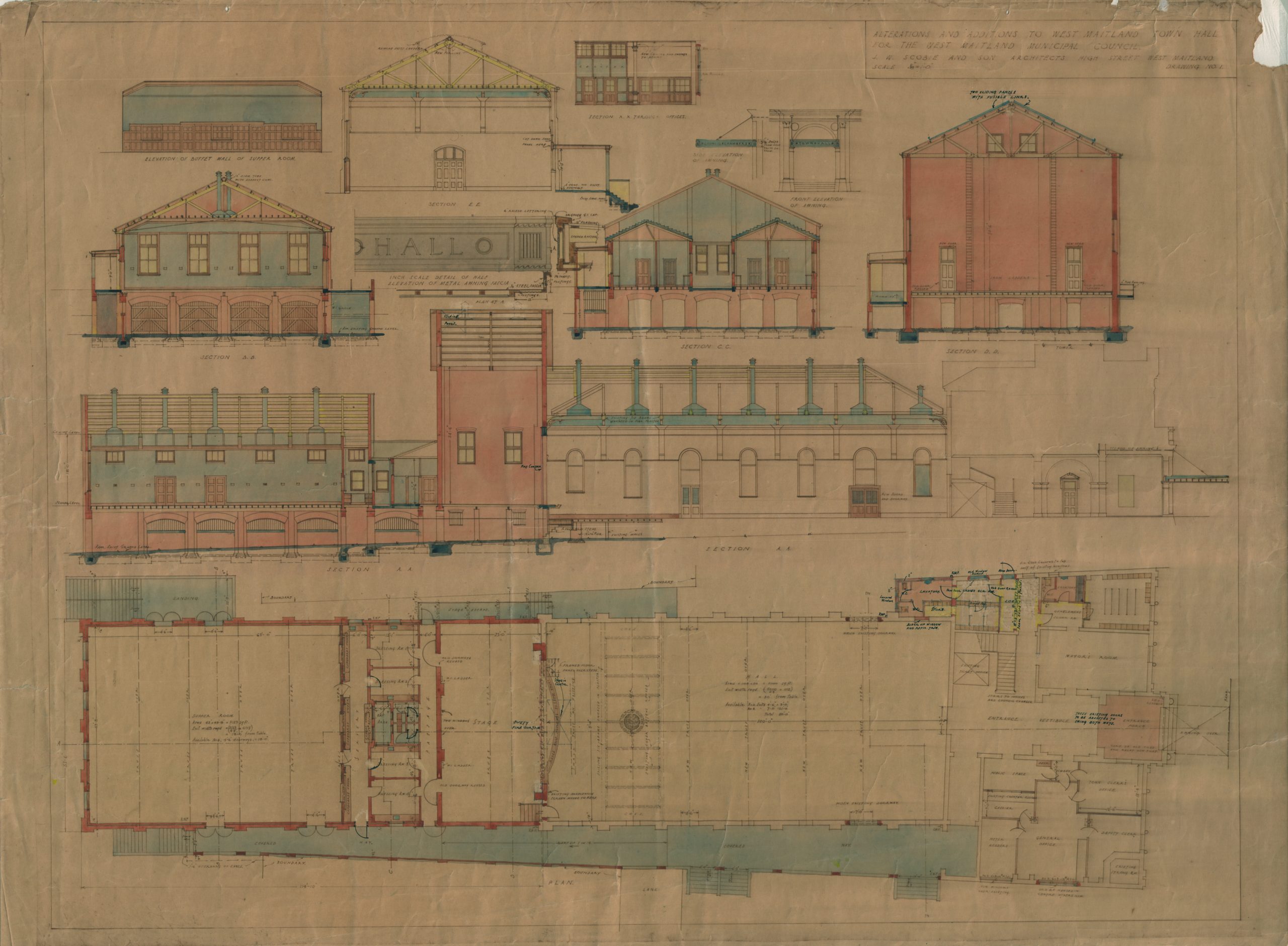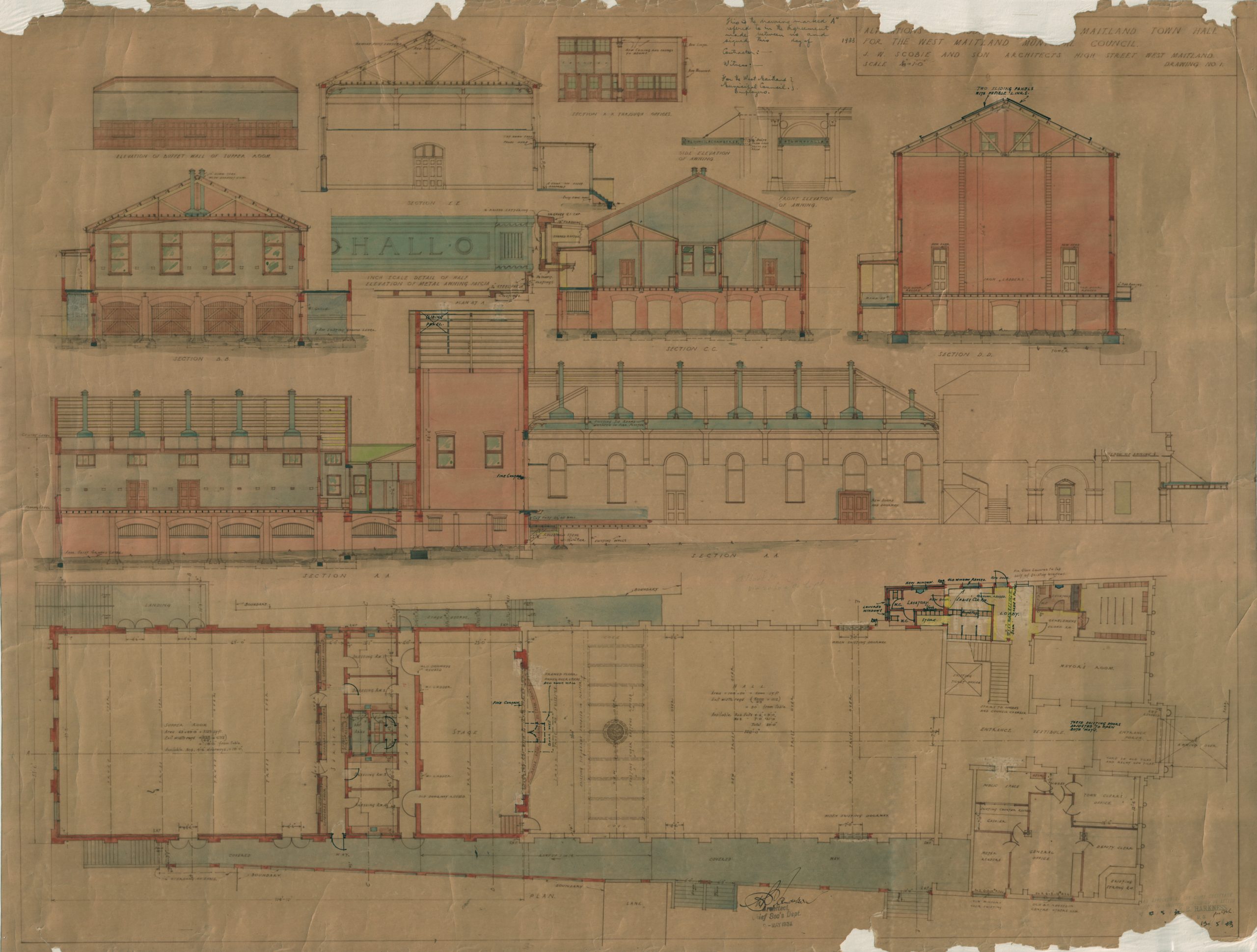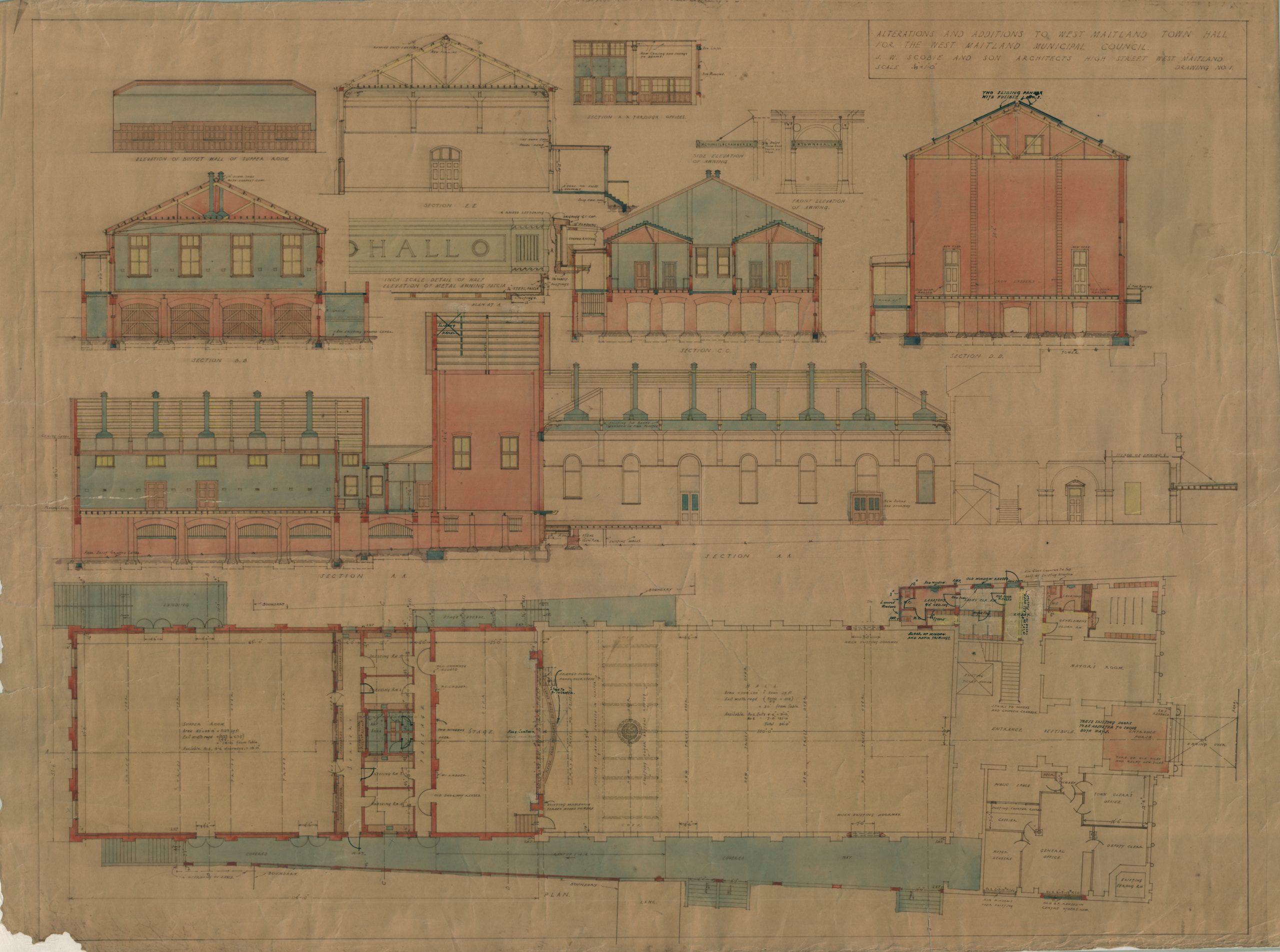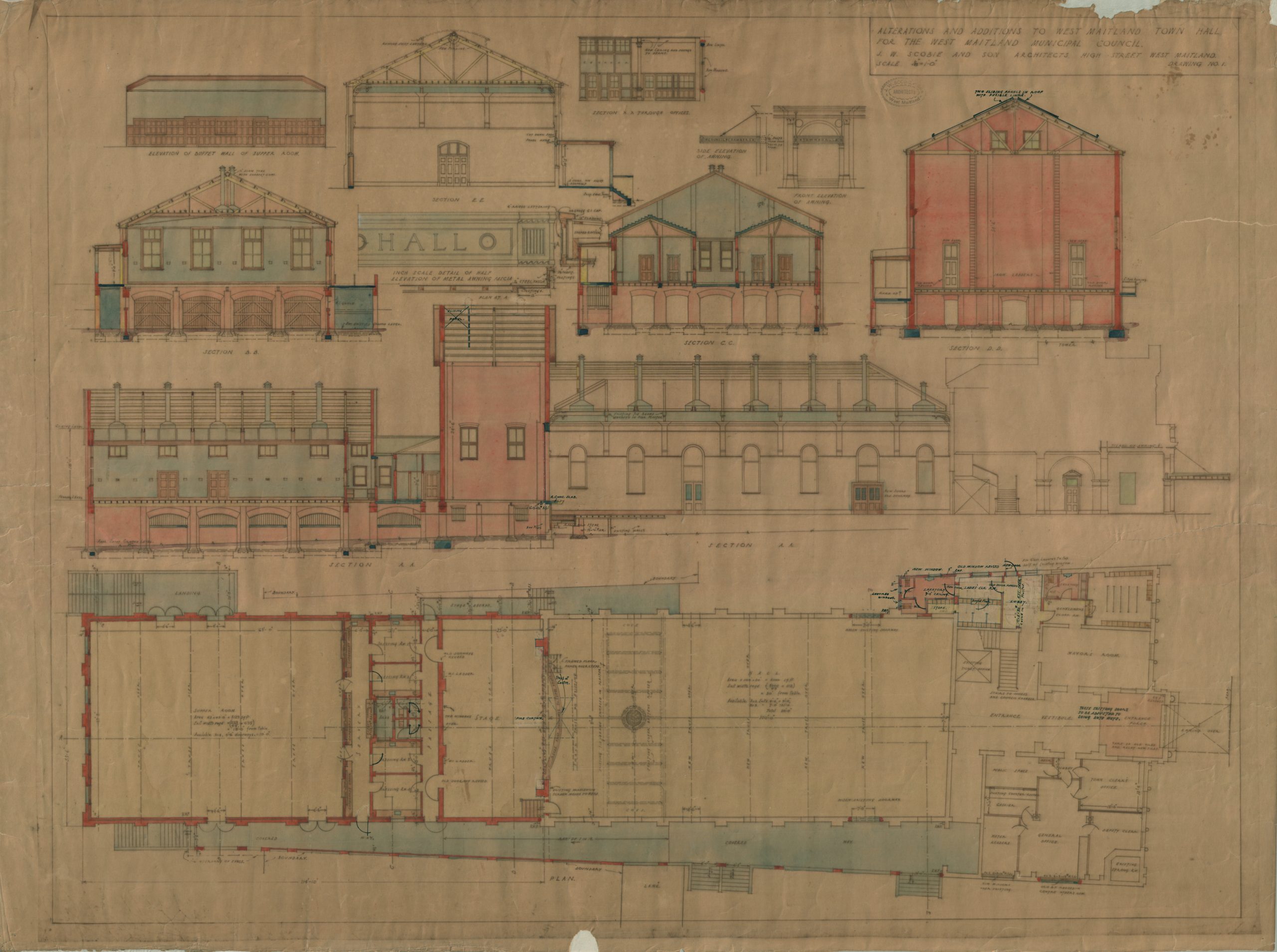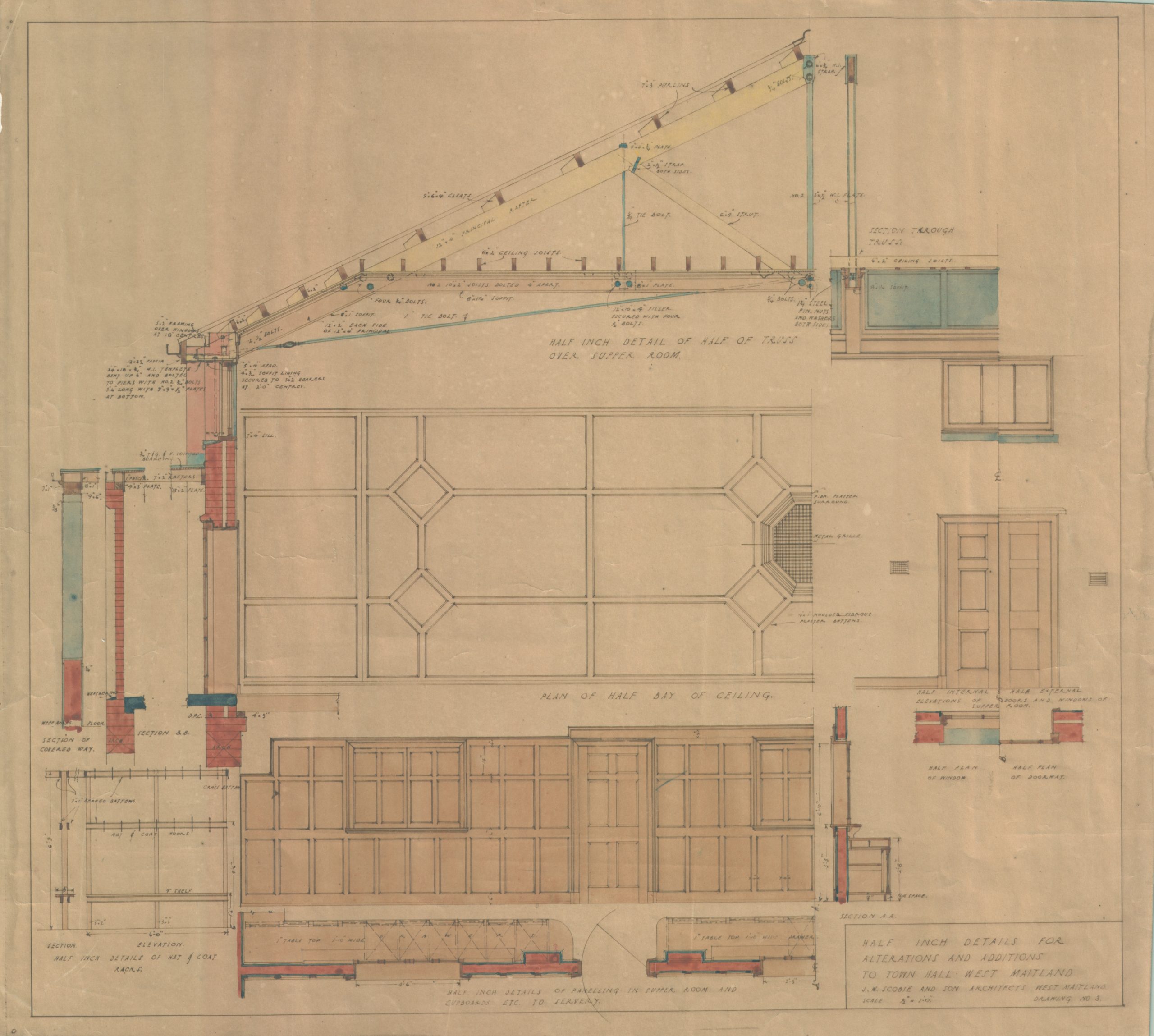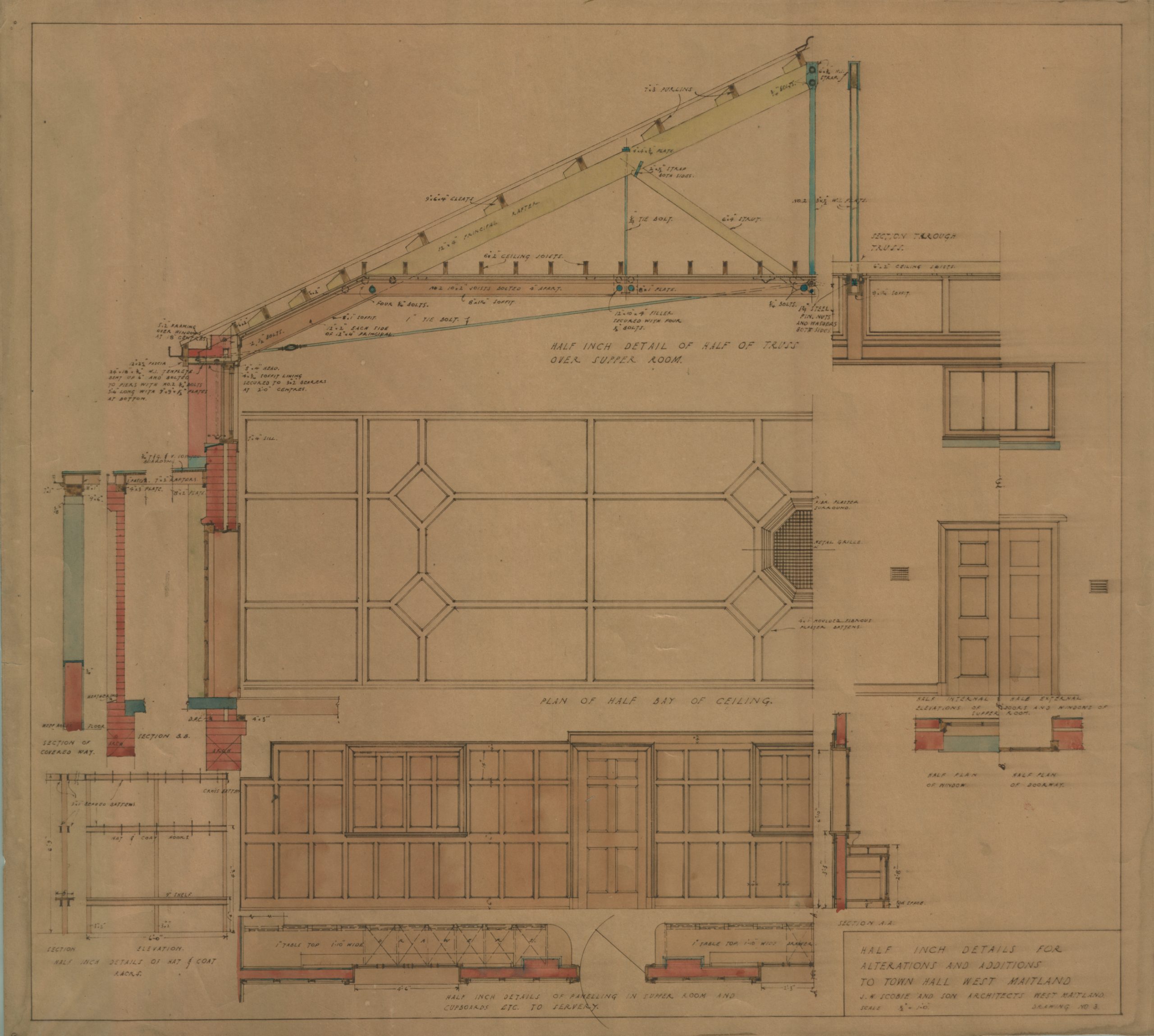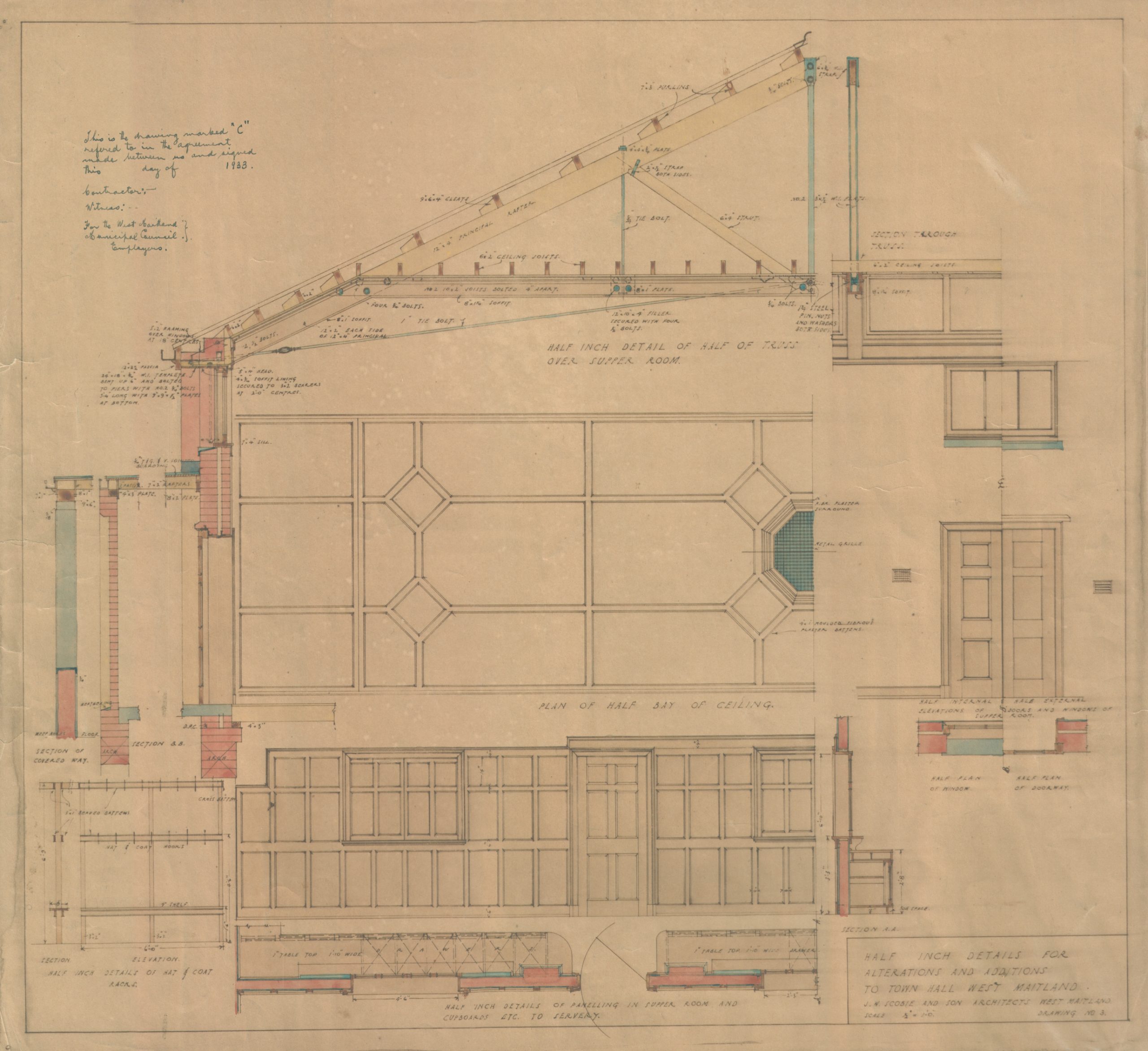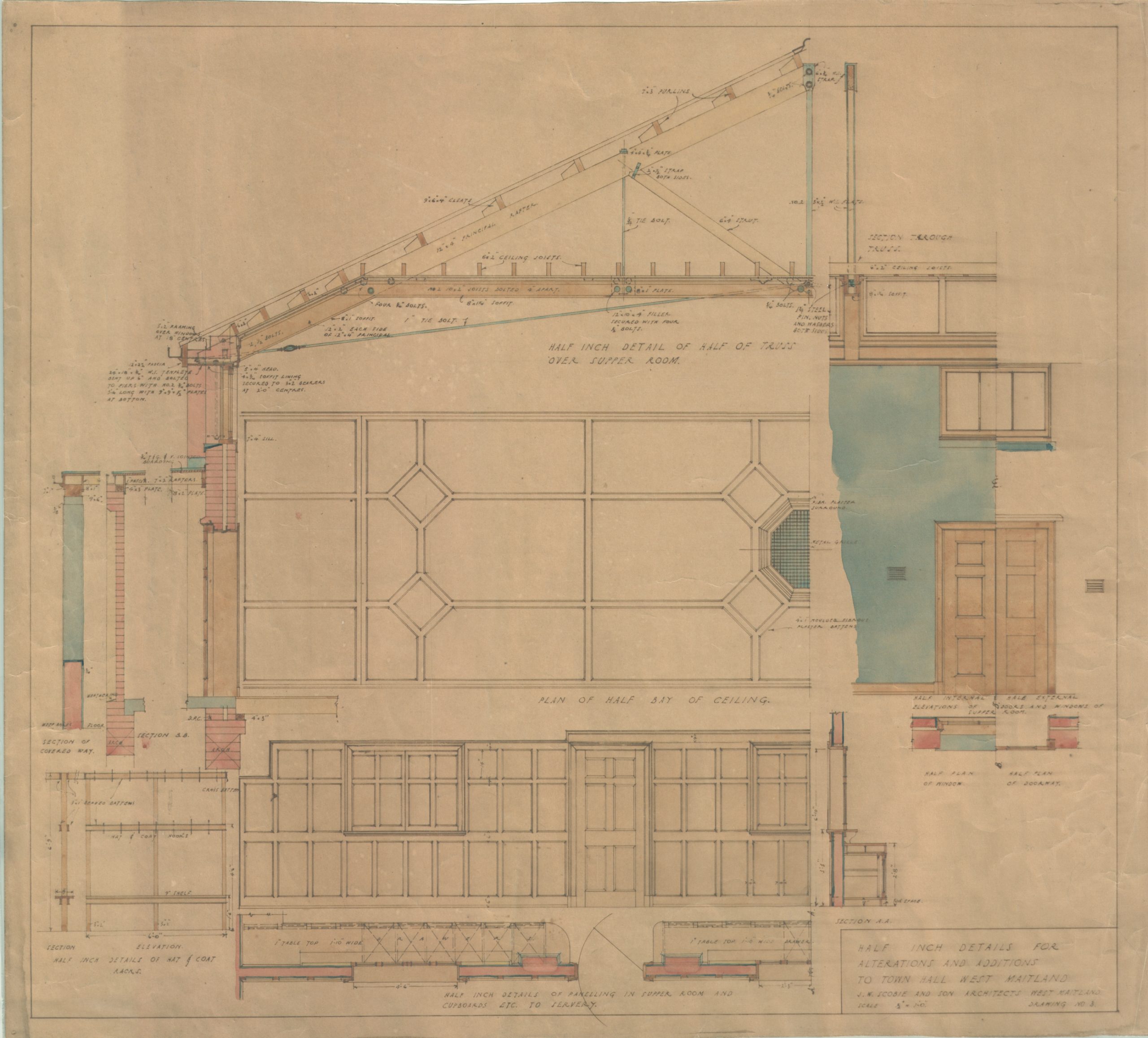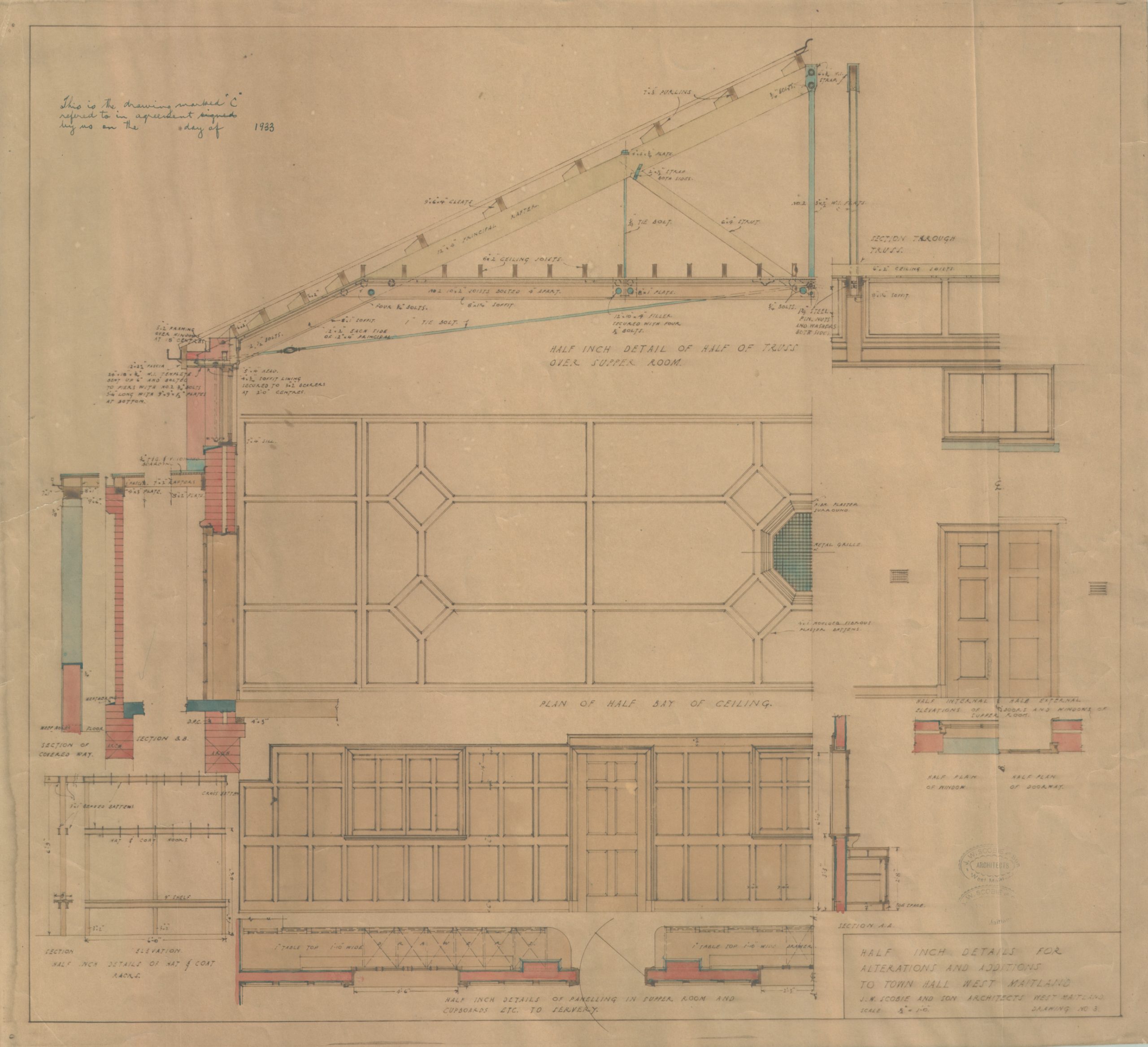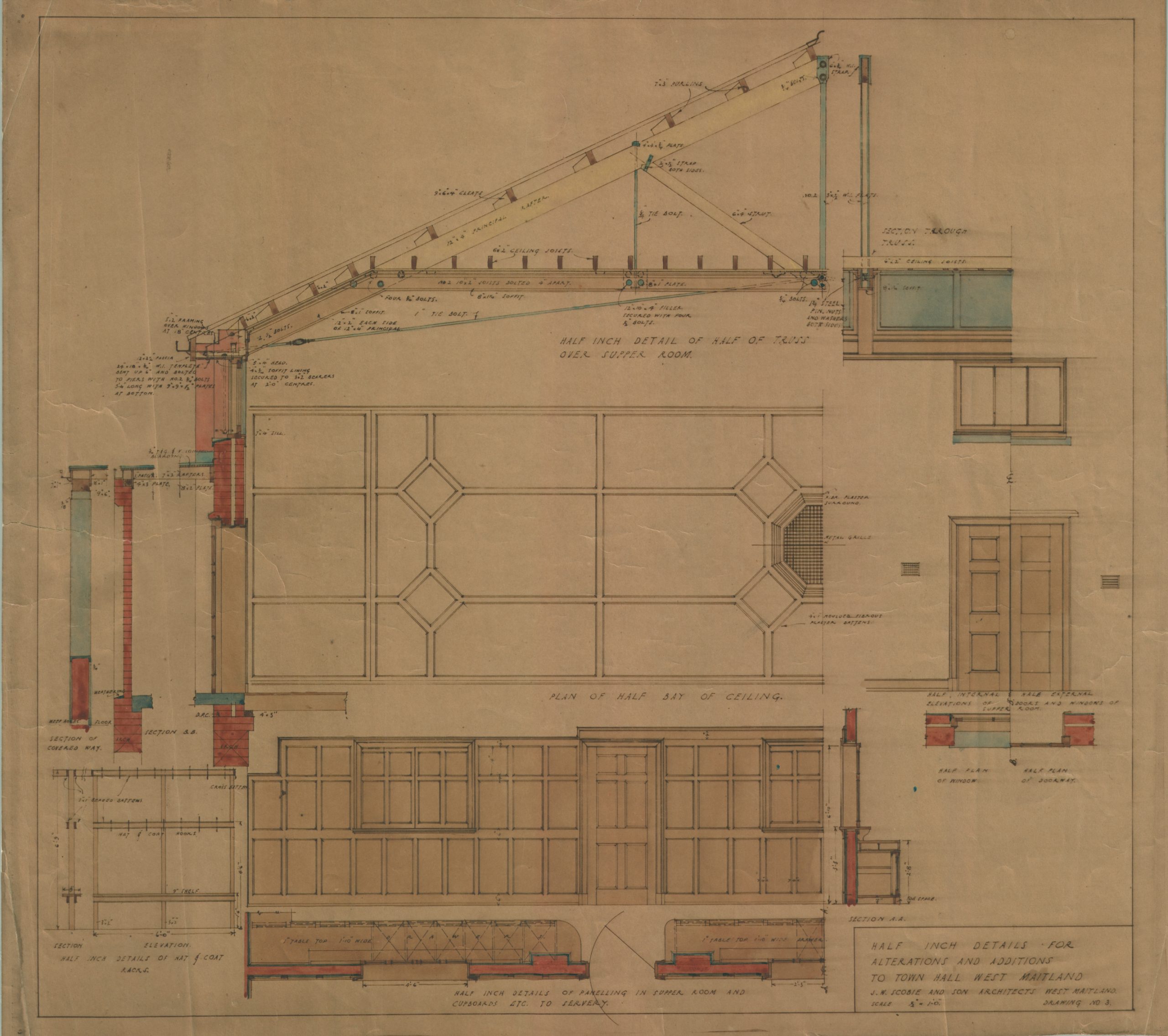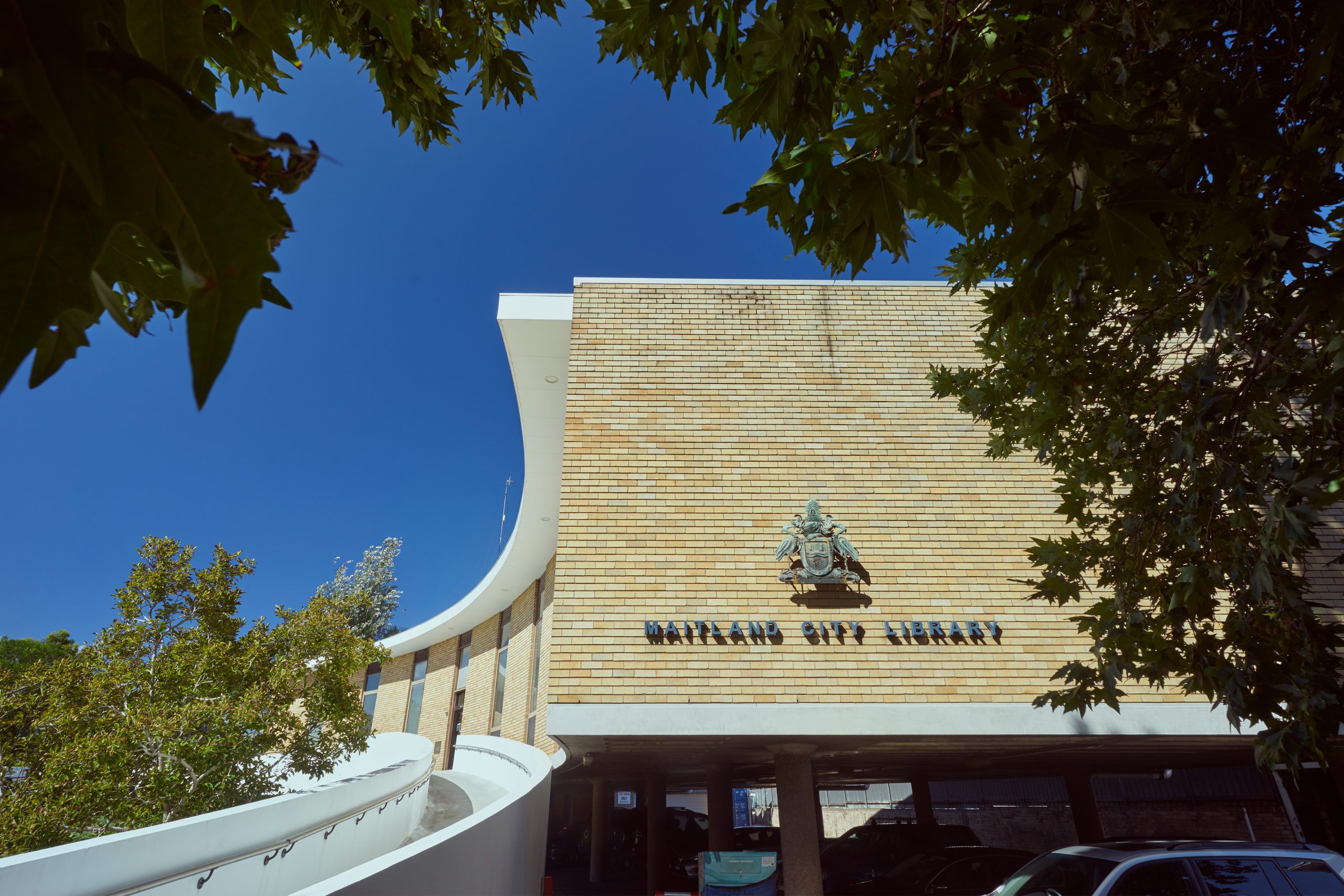Jobs for the Boys
Maitland’s Town Hall Alterations Created Depression Employment
It was a careful hand, using a fine-tipped paint brush, that expertly filled in the blocks of pastel watercolour paint on these architectural drawings in early 1933. It might have been the young architect Edward Boyd Scobie (1904-1988) who copied and coloured them at his drafting desk, in the offices of his father’s architectural firm at 454-456 High Street, Maitland, detailing the firm’s plans for the extensive remodelling of the West Maitland Town Hall. At a time when money was in short supply due to the Great Depression, the local council had secured a £10,000 loan to finance the project.
When the Town Hall opened in 1890, to the design of Edward’s father, Maitland-born architect James Warren Scobie (1863-1956) and another local architect Arthur Lee, the second-floor offices were considered spacious. The building quickly became a focus of civic pride, and hosted many cultural and social events, but by the 1930s, better facilities and repairs were needed. It’s likely that the council’s decision to extend and renovate was not only motivated by the desire to improve their civic building. The Great Depression had struck hard in Maitland, as it had everywhere, and capital works like these created employment for local men who were out of work and feeling the pinch of the economic recession.
In late 1934 when Maitland builder Montague Audet (1872-1944) and his workers had completed the alterations, the remodelled town hall was considered ‘one of the best civic halls outside the metropolitan area’. Now listed on the NSW State Heritage Register, the Maitland Town Hall with its elaborate classical detail and the art deco character of the extensions, is considered an important example of a nineteenth century civic building, designed in a grand style.
These plans embody that significance and are lucky survivors in their own right – in 1946 the Scobie firm changed ownership and the contents of the firm’s drawing store were destroyed. Except of course, these colourful copies of the plans, which seem to have been kept safe by Maitland Council since 1933.



